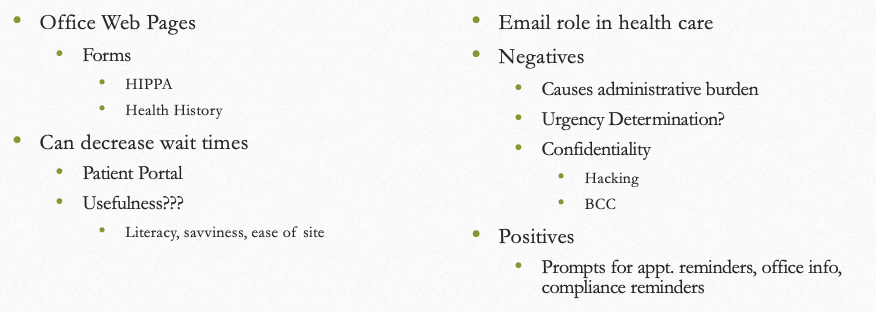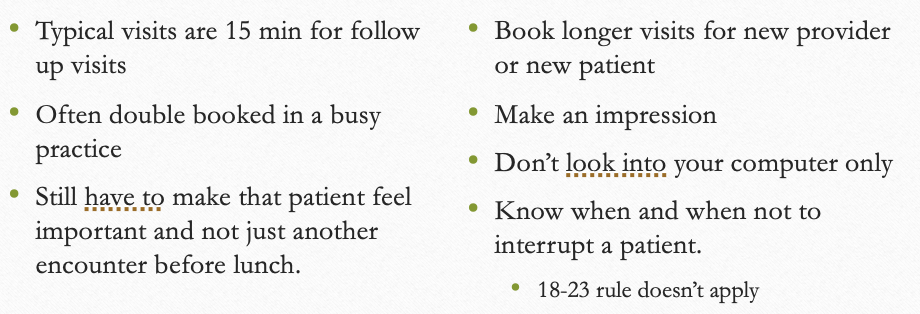Interpersonal Communication (week 6)
1/16
There's no tags or description
Looks like no tags are added yet.
Name | Mastery | Learn | Test | Matching | Spaced |
|---|
No study sessions yet.
17 Terms
What does this refer to
Patient-centered communication
Health literacy and cultural-competency
Interprofessional communication
Information Technology
Professionalism
Five areas of communication in healthcare
What does it refer to
Only at the tip of the iceberg when it comes to social software.
It is a source for global exchange of information and venue for discussion for latest developments
Is a terrible misuse if it is only a delivery system for information.
Social networkers empower patients and build communities of practice.
Social Networking
What does this refer to?

Online Communication in Health Care Office Settings
What does this refer to
Comfort of own home
Breaking down barriers to access
Time to treatment reduced
Cost savings with shared provider
Pros of telemedicine
What does this refer to
“The use of electronic information and communications technologies to provide and support health care when distance separates the participants”
Telemedicine
What does this refer to
Limited hands-on exam
Cost of data transmission
Licensing concerns
Reimbursement difficulty multiple state involvement.
Cons of Telemedicine
What does this refer to
Must still be patient-centered
Team-based with same outcome in mind
Must work synergistically
Use proper communication skills
Interprofessional communication
What does this refer to
Everyone deserves respect and tactful communication
Some may be more experienced than you
How you communicate sets the tone for inter-professional relationships
Your coworkers can make or break your enjoyment at work
How to communicate with medical staff
What does this refer to
Involves creating a sustainable health care provider-patient relationship by
Exploring patient perspectives
Expressing emotional experiences
Demonstration of empathy
And engaging in shared task-finding and shared decision making
Measured by the patient’s ability to follow through with the medical recommendations, to self-manage chronic medical conditions, and to adopt preventive health behaviors.
Patient-centered communication
What does this refer to
This is integral for positive outcomes
Establishes rapport, trust
Encourages compliance
Patient-Provider Communication
What does this refer to
Begins before the patient visit begins
Sometimes staff plays a role
Self-reflect, shake hands, sit down, smile, DON’T avoid the patient
DO talk with/to the person, DON’T talk at the patient.
Call them by name
Document a memorable piece of their history for recall
Patient-Provider Communication
What does this refer

Time Constraint
What does this refer to
Patient feels comfortable telling you their history
Patient doesn’t feel rushed leaving office
All questions answered
Nothing forgotten
Paper or “e” notes
Use support staff if available
Positive Encounter
What does this refer to
Making it clear that the messages are being heard
Thinking before reacting
Engaging in a fair and conscientious manner
Keeping the focus on the problem and not the personal issues
Finding mutual gains in the resolution
Be a good listener- A good portion of diagnoses come from history!
What does this refer to
Take time this week to look over your electronic presence. IG, FB, Snap, TikTok, LinkedIn etc…
Would you respect you as a provider?
Would you build rapport with someone who you are counseling to quit smoking, drinking, etc…?
Should you revise your available content?
Chang any privacy settings?
Question your future postings?
Application
In regards to time constraint, what should you do for new provider or new patients? **ON EXAM
Book longer visits
Where can a clinician practice telemedicine?
Only in the state you are licensed